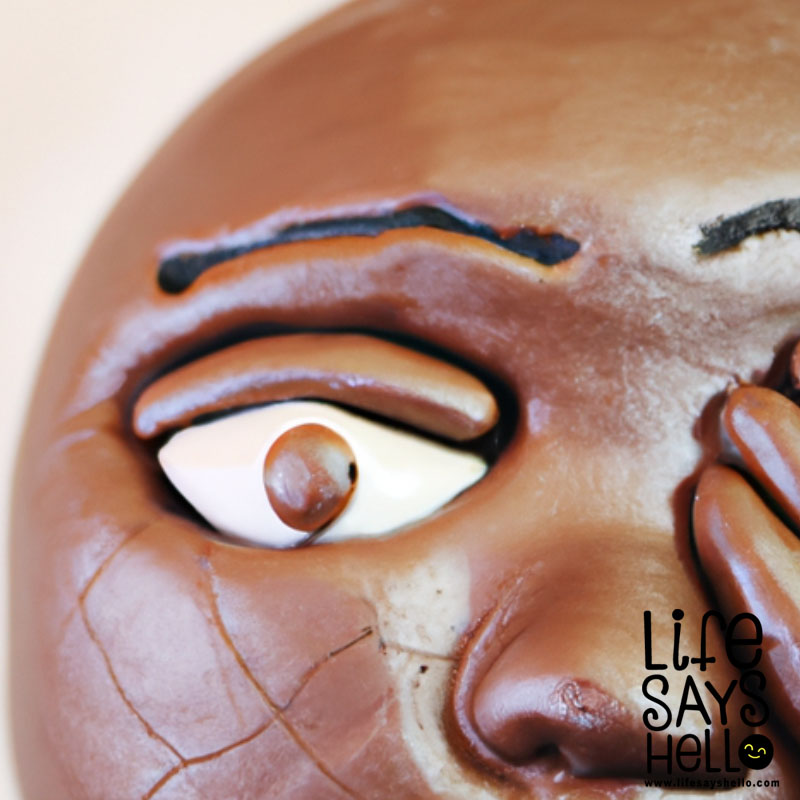The Link Between Dry Eyes and Headaches: Causes, Symptoms, and Treatments

Ever wondered if your dry eyes might be the culprit behind your frequent headaches? In this comprehensive guide, we'll explore the connection between dry eyes and headaches, and discuss effective solutions to help you find relief.
Headaches are a common ailment that can disrupt our daily lives, and often, we find ourselves searching for the root cause. One question that frequently arises is: can dry eyes cause headaches? In this article, we will delve into the world of dry eyes, examine the connection between dry eyes and headaches, and provide you with practical solutions to alleviate both conditions. So, grab a cup of tea, sit back, and let's explore this fascinating topic together.
Understanding Dry Eyes
Before we dive into the connection between dry eyes and headaches, it's essential to understand what dry eyes are and what causes them.
Definition of Dry Eyes
Dry eye syndrome, also known as keratoconjunctivitis sicca, is a common condition that occurs when your tears aren't able to provide adequate lubrication for your eyes. This can be due to either a lack of tear production or poor tear quality, which can result in the eyes not being sufficiently moisturized.
Causes of Dry Eyes
There are multiple factors that can contribute to dry eyes, including:
- Age: As we grow older, our tear production tends to decrease, making dry eyes more prevalent in older individuals.
- Medical conditions: Certain medical conditions, such as diabetes, rheumatoid arthritis, and thyroid disorders, can increase the risk of developing dry eyes.
- Medications: Some medications, including antihistamines, decongestants, and antidepressants, can reduce tear production and lead to dry eyes.
- Environmental factors: Exposure to smoke, wind, or dry air can cause the tears to evaporate more quickly, resulting in dry eyes.
- Prolonged screen time: Staring at screens for extended periods can cause us to blink less often, reducing the spread of tears across the eye's surface and leading to dryness.
Symptoms of Dry Eyes
Common symptoms associated with dry eyes include:
- A stinging or burning sensation in the eyes
- Redness and irritation
- Blurry vision
- Light sensitivity
- A feeling of having something in your eyes, like sand or grit
- Difficulty wearing contact lenses
- Watery eyes (as a reflex response to dryness)
How Dry Eyes Can Lead to Headaches
Now that we have a better understanding of dry eyes, let's explore the connection between dry eyes and headaches. When your eyes are dry, they can become strained and irritated, leading to discomfort and a feeling of pressure around the eyes. This strain and pressure can then trigger headaches, particularly in individuals who are prone to tension headaches or migraines.
Moreover, when you have dry eyes, you may unconsciously squint or frown to alleviate the discomfort, which can result in muscle tension around the forehead and temples. This muscle tension can also contribute to the development of headaches.
Types of Headaches Related to Dry Eyes
There are several types of headaches that can be linked to dry eyes. These include:
Tension Headaches
Tension headaches are the most common type of headache and are often described as a band-like pressure around the head. They can be triggered by muscle tension in the neck, shoulders, and head, which can result from eye strain due to dry eyes.
Migraines
Migraines are a more severe type of headache characterized by throbbing pain, usually on one side of the head. They can be accompanied by other symptoms such as nausea, vomiting, and sensitivity to light and sound. While the exact cause of migraines is still not fully understood, they can be triggered by various factors, including eye strain and dry eyes.
Eye Strain Headaches
Eye strain headaches are a specific type of headache that occurs due to prolonged eye strain, such as staring at a screen for extended periods or reading in low light. Dry eyes can exacerbate eye strain, increasing the likelihood of developing an eye strain headache.
Preventing and Treating Dry Eyes and Headaches
Fortunately, there are several strategies you can implement to prevent and treat dry eyes and related headaches. These include lifestyle changes, over-the-counter treatments, prescription treatments, and home remedies.
Lifestyle Changes
Making some adjustments to your daily habits can go a long way in preventing and alleviating dry eyes and headaches:
- Proper hydration: Drinking plenty of water throughout the day can help maintain your body's overall hydration, which can benefit your eyes as well.
- Taking breaks from screens: Follow the 20-20-20 rule – every 20 minutes, take a 20-second break and look at something 20 feet away. This can help reduce eye strain and give your eyes a chance to rest.
- Adjusting screen brightness and contrast: Ensure that your screen's brightness and contrast are set at comfortable levels to minimize eye strain.
Over-the-Counter Treatments
There are several over-the-counter treatments available to help alleviate dry eyes and related headaches:
- Artificial tears: These lubricating eye drops can help provide temporary relief from dry eyes by supplementing your natural tear production.
- Lubricating eye ointments: These thicker ointments can provide longer-lasting relief for dry eyes, particularly during nighttime use.
Prescription Treatments
If over-the-counter treatments aren't providing sufficient relief, your doctor may recommend prescription treatments for dry eyes:
- Topical corticosteroids: These anti-inflammatory eye drops can help reduce inflammation and improve tear production in more severe cases of dry eyes.
- Punctal plugs: These small, silicone plugs can be inserted into the tear ducts to block tear drainage, helping to keep the eye surface lubricated.
Home Remedies
In addition to the treatments mentioned above, you can also try some home remedies to alleviate dry eyes and related headaches:
- Warm compresses: Applying a warm compress to your closed eyes for 10-15 minutes can help stimulate tear production and relieve dryness.
- Eyelid massages: Gently massaging your eyelids with clean fingers or a warm washcloth can help stimulate the oil glands in your eyelids, improving the quality of your tears.
When to See a Doctor
While dry eyes and headaches can often be managed with self-care measures, it's essential to consult a healthcare professional if:
- Your symptoms are severe or persistent
- Over-the-counter treatments and home remedies aren't providing relief
- You're experiencing additional symptoms, such as eye pain or vision changes
A thorough evaluation by a doctor can help determine the underlying cause of your dry eyes and headaches and ensure that you receive the appropriate treatment.
Conclusion
In conclusion, there is indeed a connection between dry eyes and headaches, with dry eyes often leading to eye strain and muscle tension that can trigger headaches. By implementing the prevention and treatment strategies discussed in this article, you can effectively manage both dry eyes and related headaches, allowing you to enjoy a more comfortable and headache-free life.




Comments